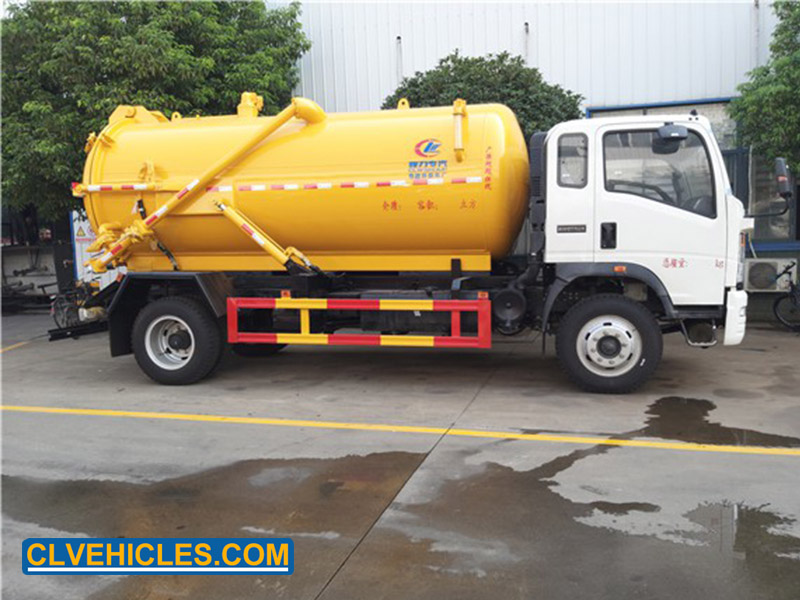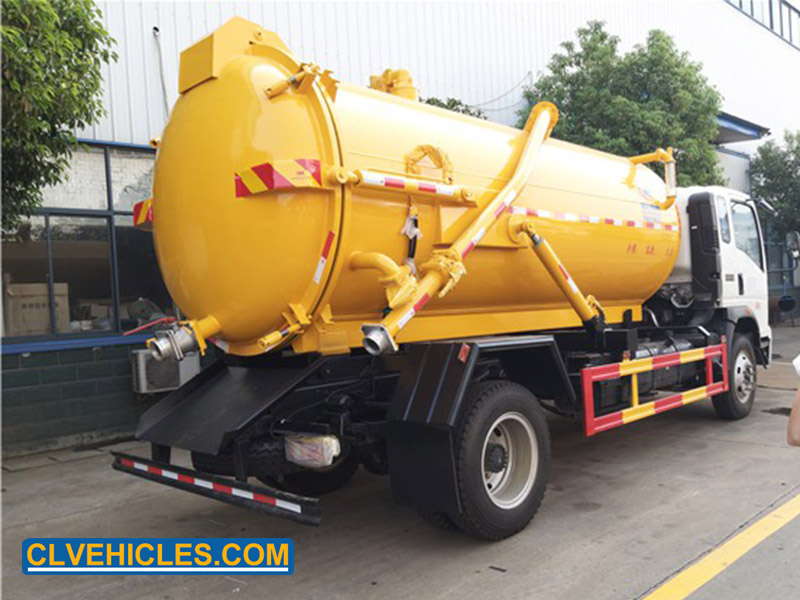The sewage vacuum truck with water circulation
pump will be equipped with a relatively large water tank for pump to store the
water required by the water circulation pump. A full box of water is often used
up quickly. Where has all this water gone?
1. Water evaporation. Water as the working fluid of the water circulation pump helps the pump body to cool down and absorbs the heat generated by the pump body ducirculation the operation of the sewage suction truck, and is evaporated.
Solution: No treatment, add water to the water tank in time.

2. The water tank and the pump body are connected by a pipe. If the pipe is damaged, or the connection is loose, then the water will leak from the damaged and loose place.
Solution: Replace the damaged pipe and fasten the connection to prevent dripping.

3. Water leaks from the sealing ports at both ends of the water circulation pump
Solution: There are two cases of water leakage from the sealing ports at both ends of the water circulation pump. If the water leaks at a rate of 10-20 drops per minute, it is normal and does not need to be treated. If the water leakage speed is fast, you need to tighten the two screws of the sealing circulation to reduce the leakage. If the situation does not improve after tightening, the packing at the seal needs to be replaced.

4. During the operation of the water circulation pump, water is sprayed out of the outside world along with the air in the tank.
Solution: During the operation of the water circulation pump cleaning and suction truck, water is mixed with high-speed air to form a mist, which is discharged from the exhaust port of the four-way valve to the outside world. If a small amount of water is discharged, it is normal and you only need to add fresh water in time. If a large amount of water is sprayed out, there are two situations. One is that the water level in the water tank is too high, and it can return to normal after being discharged with excess water. The other case is that the structure of the water tank is unreasonable and cannot play a good role in water vapor separation. In this case, the water tank needs to be replaced.

1. Water evaporation. Water as the working fluid of the water circulation pump helps the pump body to cool down and absorbs the heat generated by the pump body ducirculation the operation of the sewage suction truck, and is evaporated.
Solution: No treatment, add water to the water tank in time.

2. The water tank and the pump body are connected by a pipe. If the pipe is damaged, or the connection is loose, then the water will leak from the damaged and loose place.
Solution: Replace the damaged pipe and fasten the connection to prevent dripping.

3. Water leaks from the sealing ports at both ends of the water circulation pump
Solution: There are two cases of water leakage from the sealing ports at both ends of the water circulation pump. If the water leaks at a rate of 10-20 drops per minute, it is normal and does not need to be treated. If the water leakage speed is fast, you need to tighten the two screws of the sealing circulation to reduce the leakage. If the situation does not improve after tightening, the packing at the seal needs to be replaced.

4. During the operation of the water circulation pump, water is sprayed out of the outside world along with the air in the tank.
Solution: During the operation of the water circulation pump cleaning and suction truck, water is mixed with high-speed air to form a mist, which is discharged from the exhaust port of the four-way valve to the outside world. If a small amount of water is discharged, it is normal and you only need to add fresh water in time. If a large amount of water is sprayed out, there are two situations. One is that the water level in the water tank is too high, and it can return to normal after being discharged with excess water. The other case is that the structure of the water tank is unreasonable and cannot play a good role in water vapor separation. In this case, the water tank needs to be replaced.

评论
发表评论